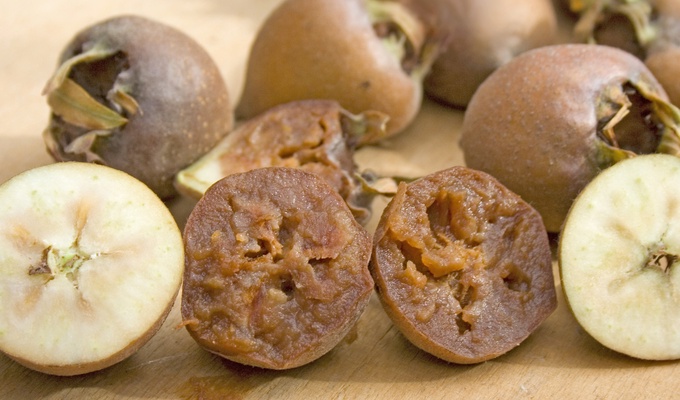Bletting is a process of softening that certain fleshy fruits undergo, beyond ripening. There are some fruits that are either sweeter after some bletting, such as sea buckthorn, and others which can be eaten raw only after bletting, such as medlars, persimmons, quince, service tree fruit, and wild service tree fruit (popularly known as chequers).
Chemically speaking, bletting brings about an increase in sugars and a decrease in the acids and tannins that make the unripe fruit astringent.
Ripe medlars, for example, are taken from the tree, placed somewhere cool, and allowed to further ripen for several weeks. Ideally, the fruit should be harvested from the tree immediately following a hard frost, which starts the bletting process by breaking down cell walls and speeding softening.
Once the process is complete, the medlar flesh will have broken down enough that it can be spooned out of the skin. The taste of the sticky, mushy substance has been compared to sweet dates and dry applesauce, with a hint of cinnamon. In Notes on a Cellar-Book, the great English oenophile George Saintsbury called bletted medlars the "ideal fruit to accompany wine."
